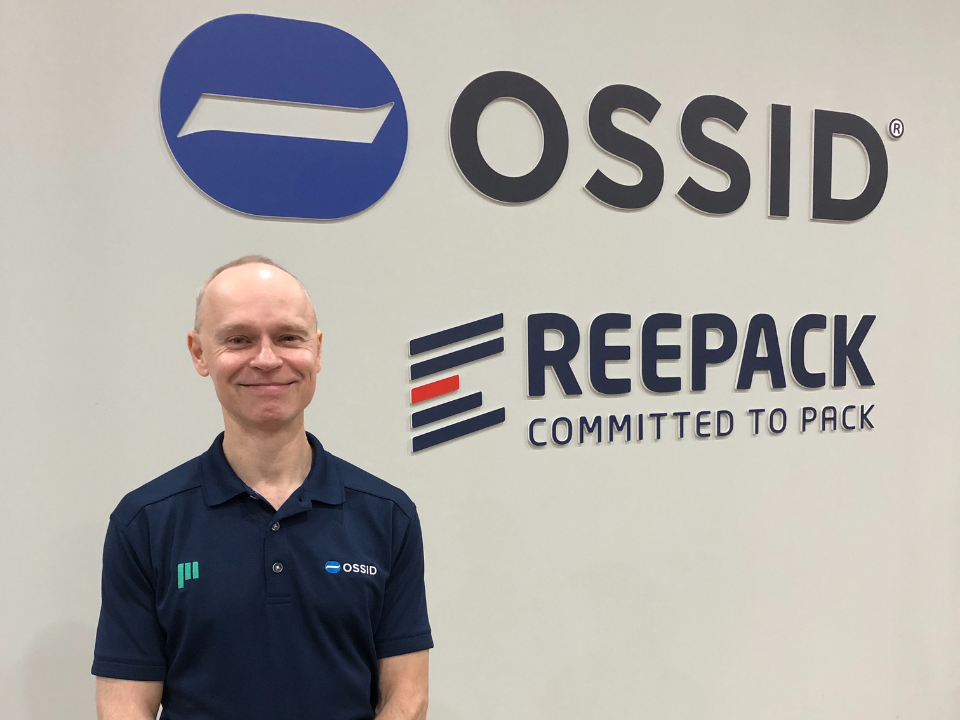Robert McLaughlin
Maintaining high standards of food safety and hygiene is paramount in the food industry. Packaging equipment manufacturers play a crucial role in preventing contamination and ensuring consumer safety by offering machines designed with easy-to-clean features and materials that meet stringent hygiene standards. Additionally, automated systems can minimize human contact with the product, further reducing the risk of contamination. We recently spoke with Robert McLaughlin, Ossid Regional Sales Manager, to explore how Ossid’s equipment addresses these critical issues. Here’s what we learned:
How Does Your Packaging Equipment Ensure Food Safety and Meet Stringent Hygiene Standards?
Our packaging equipment is meticulously designed to meet the highest food safety and hygiene standards, incorporating the latest advancements in the field. As highlighted by Dr. Francisco Diez-Gonzalez in a recent Meatingplace podcast, the meat industry has made significant strides in food safety by adopting HACCP rules and applying scientific methods, such as genome sequencing, to identify and control pathogens. Our equipment features smooth, easy-to-clean surfaces and is constructed from materials that resist corrosion and contamination. Additionally, advanced systems and automated processes minimize human contact, reducing the risk of contamination at every stage. This comprehensive approach ensures compliance with federal and state regulations, ultimately protecting consumer safety.
Materials and Technologies Used in Our Equipment to Prevent Contamination
We utilize high-grade stainless steel and other non-corrosive materials that are durable and easy to sanitize, ensuring that our equipment can withstand the harsh conditions of food processing environments. The ergonomic design of our machines allows for efficient operation under extreme humidity and temperature conditions. We also incorporate washdown designs, where surfaces are angled for quick runoff, preventing water from pooling and reducing places where contaminants can accumulate. These features align with the industry’s use of rapid testing methods, enhancing our ability to maintain stringent hygiene standards to prevent contamination.
Impact of Automated Systems on Food Safety
Our automated systems significantly reduce the need for human contact with food products, which in turn minimizes the risk of cross-contamination. As Dr. Francisco Diez-Gonzalez noted, automation in slaughter and processing has been a key factor in limiting the spread of foodborne illnesses. By automating critical stages of the packaging process, we ensure that the product is handled in a controlled environment, maintaining high hygiene standards. Automation also improves production efficiency, reducing the time that food products are exposed to temperatures that could foster bacterial growth. This helps in maintaining safety and extending the shelf life of the food products.
Examples of Improved Food Safety and Hygiene for Our Customers
One notable example is a customer who implemented our overwrap and rollstock packages directly into their spiral freezer lines. This integration allowed the product to be rapidly chilled to near-freezing temperatures, effectively minimizing pathogen growth and maximizing shelf life.
In another case, our labeling systems, which include traceability features, enabled a client to efficiently track products and associate them with specific lot numbers, significantly enhancing their ability to manage food safety and recall procedures. As Dr. Diez-Gonzalez emphasized, traceability is critical for future food safety initiatives, and our equipment supports this by providing reliable and accurate tracking systems.
Maintenance and Cleaning Protocols to Ensure Hygiene and Food Safety
Our packaging equipment is designed to endure rigorous plant sanitation processes. We recommend regular maintenance and cleaning protocols that include using our specialized cleaning mode, for example, in our rollstock equipment line. This mode locks the tooling in place during cleaning to prevent water from penetrating electrical components. Furthermore, the stainless steel framing and paneling of our equipment offer superior contamination control and are easy to wash down or wipe clean. Regular inspection and adherence to these cleaning standards ensure that our equipment remains in optimal condition, maintaining high levels of hygiene and food safety.
Effective Cleaning in Harsh Food Processing Environments
Our equipment is built to withstand severe plant environments and rigorous sanitation processes. Most of our equipment features stainless steel frames and panels, which provide excellent contamination control and are easily cleaned. This robust design ensures that the equipment remains hygienic and operational even in the most challenging conditions, maintaining the highest standards of food safety. As the industry continues to adopt advanced molecular methods and biosensor technologies for pathogen detection, our equipment is poised to integrate these innovations, further enhancing food safety measures.
Conclusion
Ensuring food safety and hygiene is a critical concern for the food industry. By integrating advanced technologies, using high-quality materials, and implementing rigorous cleaning protocols, Ossid’s packaging equipment helps businesses maintain high standards of food safety and prevent contamination. Automation plays a key role in reducing human contact and minimizing the risk of cross-contamination, while durable, easy-to-clean designs ensure ongoing hygiene and compliance with regulatory standards.
For more information on how Ossid’s advanced packaging solutions can enhance food safety in your operations, feel free to reach out to our sales team or visit our website.

Subscribe to our email list for the latest in flexible packaging news.

